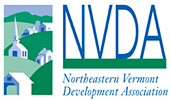Municipal Land Use Planning
Why write a Municipal Plan?
Planning empowers communities to respond to change in ways that reflect their own goals, needs, priorities and values. Planning can allow communities to designate key growth and rural areas to attract new business or to preserve rural character. Perhaps the greatest advantage of planning is the long-range vision gained by the community through a democratic and inclusive process.
- ● Participation in creating a vision of the future.
- ● Increased eligibility for grants (A plan is mandatory with some grant programs)
- ● Articulates the municipality's opinion about issues for Act 250 and Section 248 proceedings
Plans are often written or updated to implement zoning bylaws and flood hazard regulations. However, they are also required for non-regulatory initiatives, such as Downtown or Village Center designation or capital budgets and programs.
What should the Municipal Plan contain?
Vermont statute has established some guidelines for the local plan, if the plan is going to be approved by the regional planning commission. For example, the plan must be consistent with statewide planning goals. It also must include, at a minimum, twelve elements. They can be summarized as:
- 1. Statement of the objectives, policies, and programs of the municipality
- 2. Land use plan*
- 3. Transportation plan*
- 4. Utility and facility plan*
- 5. Statement on the preservation of rare and irreplaceable natural areas, scenic, and historic features and resources
- 6. Educational facilities plan*
- 7. Recommended program for implementing the plan
- 8. Statement of how the plan relates to plans and development trends for adjacent municipalities and the region
- 9. Energy plan
- 10. Housing element, including a recommended program for addressing the needs of low- and moderate-income individuals
- 11. Economic development plan
- 12. Flood resilience plan (required for all plans adopted on July 1, 2014 and later)
*Elements noted with an asterisk (*) must be accompanied by mapping data. This data may be incorporated into one or two maps.
When reviewing plans for regional approval, NVDA staff used this review form.
Why is Regional Approval Important?
Vermont statute enables municipalities to submit their plans to NVDA to request regional approval. While regional approval is not required by law, it does make communities eligible for certain benefits, such as access to Municipal Planning Grant funds, or Downtown or Village Center designation. The approval process involves a public hearing that is held by a committee from NVDA’s board. Following this public hearing, the committee will make a recommendation that will be acted upon at the next full board meeting. To make a recommendation for approval, the committee must find that the town plan 1) is consistent with the statewide planning goals; 2) is compatible with the regional plan and other approved plans in the region, and 3) contains the required 12 elements found in 24 VSA, 4382.
How can we develop a plan?
Click here for resources and data relevant to your community's planning efforts.
Click here to review other plans in our region.
Your municipality may also be able to apply for a Municipal Planning Grant to help cover the cost of developing a plan intended for regional approval.
And yes, NVDA can help! Our staff provide extensive technical assistance to member communities. We often serve as a "hot line" for all municipal officials who have questions about land use, planning, zoning, permitting, and any number of other issues. NVDA also makes professional planning and zoning services available to even the smallest community for a reasonable cost. We also provide on-site and customized training. We encourage you to give us a call: 748-5181.

